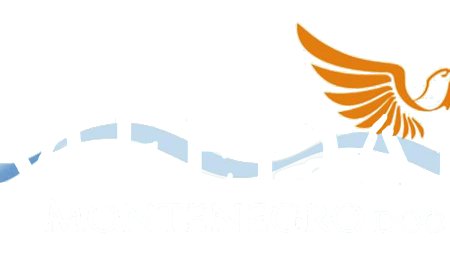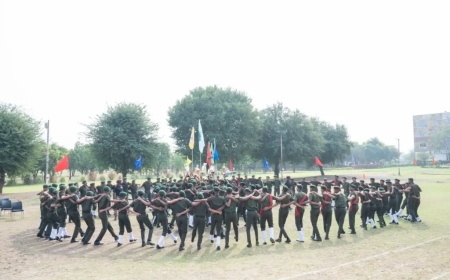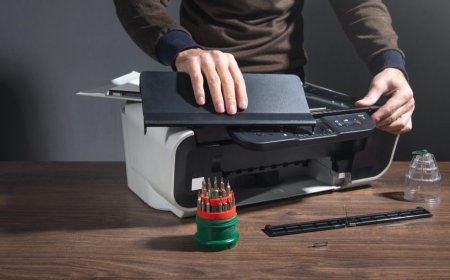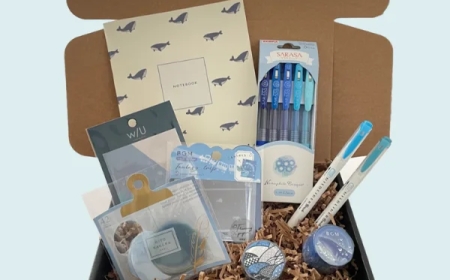How to Picnic with a View at Red Rock Canyon in Las Vegas
How to Picnic with a View at Red Rock Canyon in Las Vegas Red Rock Canyon National Conservation Area, just 17 miles west of the Las Vegas Strip, is one of the most breathtaking natural landscapes in the American Southwest. Towering red sandstone cliffs, winding desert trails, and panoramic overlooks create a dramatic backdrop unlike any other. While most visitors come for hiking, rock climbing, or
How to Picnic with a View at Red Rock Canyon in Las Vegas
Red Rock Canyon National Conservation Area, just 17 miles west of the Las Vegas Strip, is one of the most breathtaking natural landscapes in the American Southwest. Towering red sandstone cliffs, winding desert trails, and panoramic overlooks create a dramatic backdrop unlike any other. While most visitors come for hiking, rock climbing, or scenic drives, few realize that Red Rock Canyon is also one of the most spectacular places in Nevada to enjoy a picnic with a view. Combining the serenity of nature with the convenience of a well-planned meal, picnicking here offers more than just food—it delivers a sensory escape from the city’s neon glow into a world of quiet beauty and geological wonder.
Picnicking with a view at Red Rock Canyon isn’t just about laying out a blanket and eating sandwiches. It’s an experience that requires thoughtful preparation, an understanding of the environment, and respect for the land. Whether you’re a local looking for a weekend reset or a traveler seeking an unforgettable day away from crowded casinos, mastering the art of a Red Rock Canyon picnic transforms an ordinary outing into a memorable, rejuvenating ritual.
This guide provides a comprehensive, step-by-step roadmap to planning and executing the perfect picnic with a view at Red Rock Canyon. From selecting the ideal spot to packing sustainably and navigating regulations, you’ll learn how to elevate your outdoor meal into a seamless, immersive experience that honors the desert ecosystem while maximizing your enjoyment.
Step-by-Step Guide
1. Choose the Right Time to Visit
The timing of your visit can make or break your picnic experience. Red Rock Canyon experiences extreme temperature fluctuations—summer days can soar above 100°F (38°C), while winter mornings dip below freezing. The sweet spot for picnicking is between late March and early June, and again from September to early November. During these months, daytime temperatures hover between 70°F and 85°F (21°C–29°C), making it comfortable to sit outdoors without overheating or bundling up.
Avoid midday in summer. If you must visit during hotter months, plan your picnic for early morning (before 9 a.m.) or late afternoon (after 4 p.m.). The light during these hours is softer, casting golden hues across the red rocks and creating ideal photo conditions. Sunrise picnics are especially magical—arrive just before dawn, set up quietly, and watch the canyon wake up as the sun ignites the sandstone cliffs in fiery reds and oranges.
2. Select Your Picnic Spot
Red Rock Canyon offers multiple designated picnic areas, each with unique views and levels of accessibility. Your choice should depend on your group size, mobility, and desired ambiance.
Calico Basin Picnic Area is the most popular and well-equipped option. Located near the main entrance, it features covered picnic tables, restrooms, drinking water, and shaded areas under desert trees. The backdrop is the towering Calico Hills, offering dramatic red rock formations just steps away. This is ideal for families or groups who want comfort without sacrificing scenery.
La Madre Springs Picnic Area is smaller and quieter, located farther along the scenic loop road. It’s perfect for couples or small groups seeking solitude. The view here includes a natural spring-fed pool (seasonal) and a forest of desert willows. While there are no amenities beyond tables and trash bins, the seclusion makes it feel like a hidden gem.
Off-Trail Picnicking is permitted in many areas as long as you stay 100 feet from trails, water sources, and sensitive vegetation. If you’re adventurous and have a reliable vehicle (high-clearance recommended), consider parking at the Willow Springs Picnic Area or near the Keystone Thrust Overlook. Set up your blanket on a flat, rocky outcrop with a view of the canyon’s full expanse. This requires more preparation but rewards you with unmatched privacy and panoramic vistas.
3. Plan Your Menu Thoughtfully
A picnic in the desert demands food that stays fresh, is easy to eat without utensils, and doesn’t attract wildlife. Avoid perishable items that require refrigeration unless you have a high-quality cooler with ice packs. Here’s a sample menu designed for Red Rock Canyon:
- Sandwiches: Whole grain wraps or rolls with turkey, hummus, roasted vegetables, or grilled halloumi. Wrap in parchment paper to avoid plastic waste.
- Snacks: Trail mix with nuts, dried fruit, and dark chocolate; whole-grain crackers with cheese cubes; fresh apples or oranges (they don’t bruise easily).
- Drinks: At least 1 liter of water per person. Add electrolyte tablets or lemon slices for flavor. Avoid sugary sodas—they attract ants and bees in the desert.
- Dessert: Energy bars, homemade granola squares, or a single slice of lemon cake wrapped in beeswax wrap.
Always pack more water than you think you’ll need. Dehydration happens quickly in dry climates, even when you’re sitting still. A reusable stainless steel water bottle with a built-in filter is ideal—many visitors refill at the park’s water stations.
4. Pack Smart: The Essential Kit
Bring more than just food. A successful picnic requires gear that adapts to the desert environment:
- Insulated cooler: Use block ice or reusable gel packs—they last longer than cubes.
- Large, lightweight picnic blanket: Choose one with a waterproof backing to protect against hot sand or occasional dew.
- Portable sunshade or umbrella: The desert sun is intense. A pop-up canopy or UV-blocking umbrella provides critical relief.
- Reusable plates, cups, and utensils: Avoid single-use plastics. Bamboo or stainless steel sets are durable and eco-friendly.
- Wet wipes and hand sanitizer: No sinks mean you’ll need to clean hands after eating.
- First aid kit: Include bandages, antiseptic, tweezers (for cactus spines), and allergy medication.
- Trash bags: Pack out everything you bring in. Leave no trace.
- Binoculars: Enhance your view of wildlife—bighorn sheep, golden eagles, and desert tortoises are often visible from picnic areas.
- Small notebook and pen: For journaling or sketching the landscape.
5. Navigate the Park Efficiently
Red Rock Canyon’s 13-mile scenic loop road is the only way to access most picnic areas. Before you go, download the official NPS app or print a map—cell service is spotty. The loop opens at 6 a.m. and closes at sunset. Entrance fees are $15 per vehicle (valid for 7 days), payable at automated kiosks or online in advance.
Arrive early. Parking fills up by 9 a.m. on weekends. If the main lot at Calico Basin is full, continue driving to La Madre Springs or the Willow Springs trailhead—there are overflow spots along the road.
Always check the park’s website for closures. Trails or picnic areas may be temporarily closed due to wildlife activity, fire risk, or maintenance. Respect all posted signs—especially those indicating closures to protect nesting raptors or sensitive desert flora.
6. Set Up Your Picnic with Care
When you arrive at your chosen spot, follow these steps:
- Place your blanket on flat, stable ground. Avoid slopes or areas near loose rocks.
- Set up your shade structure first. The sun moves quickly in the desert.
- Keep food sealed until ready to eat. Open containers attract insects and rodents.
- Use a small tablecloth or tray to contain crumbs and spills.
- Position your cooler in the shade. Never leave it in direct sunlight.
- Keep pets on a leash and under control. They can disturb wildlife and other visitors.
Once everything is set, take a moment to sit quietly. Listen to the wind, watch the clouds drift over the cliffs, and let the silence settle in. This isn’t just a meal—it’s a moment of connection with the land.
7. Clean Up and Leave No Trace
Leaving no trace is non-negotiable in Red Rock Canyon. The desert ecosystem recovers slowly, and human waste, litter, and food scraps can have long-lasting impacts.
Before you leave:
- Double-check under your blanket and around your chairs for crumbs, napkins, or wrappers.
- Dispose of all trash in designated bins or pack it out if none are available.
- Do not bury food waste—it attracts animals and disrupts natural foraging.
- Never feed wildlife. Even seemingly harmless treats like bread or fruit can harm desert tortoises and birds.
- Return all gear to your vehicle. Do not leave chairs, coolers, or blankets behind.
Take a photo of your spot before you go. If you see litter left by others, pick it up. One person’s effort multiplies when others follow.
Best Practices
Respect Wildlife and Vegetation
Red Rock Canyon is home to over 300 plant species and more than 200 animal species, many of which are rare or endangered. The desert tortoise, a threatened species, is especially vulnerable to human disturbance. Never approach, touch, or attempt to photograph tortoises up close. If you see one, stop, keep your distance, and let it move on its own.
Desert plants like creosote bush, Joshua trees, and brittlebush take decades to grow. Never step on them or remove any vegetation—even flowers or fallen branches. The soil is fragile; compacting it can prevent water absorption and kill root systems.
Hydration and Sun Safety
Dehydration is the most common medical issue among visitors. Drink water regularly—even if you don’t feel thirsty. Signs of heat exhaustion include dizziness, nausea, dry mouth, and dark urine. If you or someone in your group shows symptoms, move to shade immediately, cool down with water, and seek help if symptoms persist.
Wear a wide-brimmed hat, UV-blocking sunglasses, and broad-spectrum sunscreen (SPF 30+). Reapply every two hours. Lightweight, light-colored clothing helps reflect sunlight. Avoid cotton—it holds moisture and dries slowly. Opt for moisture-wicking fabrics instead.
Plan for Weather Changes
Desert weather is unpredictable. A clear morning can turn into a sudden thunderstorm by afternoon. Check the forecast before you leave, but always carry a lightweight rain jacket or poncho. Flash floods can occur in washes and dry creek beds—never set up your picnic in these areas.
Wind is another factor. Sand can blow in unexpectedly, especially near open cliffs. Secure your napkins and lightweight items with a small rock or clip. If gusts exceed 20 mph, consider relocating to a more sheltered spot.
Minimize Noise and Light Pollution
Red Rock Canyon’s magic lies in its quiet. Keep voices low, especially during early morning or sunset hours. Avoid playing loud music—even Bluetooth speakers can disturb wildlife and other visitors seeking peace.
At dusk, avoid using bright white lights. If you need illumination, use a red-filtered headlamp. White light disrupts nocturnal animals and diminishes the natural night sky—a rare gift in the desert.
Group Size and Etiquette
Large groups (more than 6 people) should avoid popular picnic areas during peak hours. Reserve larger spaces in advance if available, or choose lesser-known spots. Always yield to hikers and runners on trails near picnic zones. Keep your group contained and avoid spreading across multiple tables or spreading out too far.
If you’re bringing children, supervise them closely. Teach them not to climb on rocks near picnic areas—some formations are unstable. Encourage them to observe nature quietly: “What do you hear? What colors do you see?” This turns a picnic into a learning experience.
Tools and Resources
Official Park Resources
Always begin your planning with the National Park Service’s official Red Rock Canyon website: www.blm.gov/visit/red-rock-canyon. Here you’ll find:
- Real-time trail and road closures
- Weather alerts and fire danger ratings
- Interactive maps and downloadable PDFs
- Guided tour schedules and volunteer opportunities
The NPS app includes offline maps, audio tours, and a wildlife guide—essential for areas without cell service.
Navigation and Photography Tools
Use AllTrails to scout nearby trails that offer picnic-accessible viewpoints. Filter for “family-friendly” or “scenic overlook” trails with high ratings.
For photography, download PhotoPills or Sun Surveyor to track sunrise and sunset angles. These apps help you position your blanket for optimal lighting and shadow play across the canyon walls.
Packing and Gear Recommendations
Here are trusted brands for desert picnicking gear:
- Coolers: Yeti Tundra 45 or RTIC Soft Pack (both keep ice for 3+ days)
- Blankets: Pendleton Wool Picnic Blanket or GCI Outdoor Freestyle Rocker (waterproof, sand-resistant)
- Utensils: To-Go Ware Bamboo Set (lightweight, compact)
- Water: LifeStraw Filter Bottle (removes bacteria and protozoa—useful if refilling from park spigots)
- Shade: Coleman Instant Canopy (UV-blocking, easy setup)
Local Food and Supply Shops
Stock up before entering the park. Las Vegas offers excellent local markets:
- Whole Foods Market (Downtown): Organic sandwiches, fresh fruit, artisanal cheeses
- Trader Joe’s (South Las Vegas): Pre-packaged trail mix, hummus cups, gluten-free snacks
- Local Farmers Market (Fremont Street, Saturday mornings): Fresh-baked bread, honey, dried apricots, and desert herbs
Support local vendors. Buying from farmers and artisans reduces packaging waste and strengthens the regional economy.
Community and Educational Resources
Join the Red Rock Canyon Conservancy (redrockconservancy.org). They offer free educational workshops on desert ecology, Leave No Trace training, and guided sunrise picnics with naturalists. Their “Picnic with a Purpose” program even provides reusable picnic kits for rent.
Follow Instagram accounts like @redrockcanyonnca and @desertecology for real-time photos, seasonal tips, and hidden picnic spots shared by local photographers and conservationists.
Real Examples
Example 1: The Solo Sunset Picnic
Emma, a freelance writer from Phoenix, visited Red Rock Canyon during a solo road trip. She arrived at Calico Basin at 5:30 p.m., just as the sun began to lower. She unpacked a simple meal: quinoa salad with roasted beets, feta, and pistachios; a slice of sourdough bread; and a thermos of mint tea. She sat on her wool blanket, facing west, and watched the cliffs shift from crimson to violet as the sky deepened.
She didn’t take photos. Instead, she journaled: “The silence here isn’t empty—it’s full of time. I feel like I’ve stepped into the heartbeat of the earth.” She left no trace, even picking up three plastic bottles she found near the trailhead.
Example 2: The Family Adventure Picnic
The Rivera family from Henderson planned their first Red Rock picnic for their 8-year-old daughter’s birthday. They reserved a shaded table at La Madre Springs and packed a picnic basket with kid-friendly options: turkey and cheese pinwheels, apple slices, homemade trail mix, and chocolate chip cookies.
They brought a magnifying glass to examine desert plants, a field guide to birds, and a small notebook for the child to draw what she saw. After eating, they took a short, easy walk to the nearby spring pool. The daughter spotted a desert tortoise and whispered, “It’s sleeping.”
The family stayed until dusk, then packed up carefully. “We didn’t bring balloons or confetti,” the mom said. “We brought curiosity. That’s the best gift.”
Example 3: The Photographer’s Golden Hour Picnic
David, a landscape photographer from California, came to Red Rock Canyon to capture the “red hour”—the brief window after sunset when the rocks glow like embers. He arrived two hours early, set up his gear at the Keystone Thrust Overlook, and spread a low-profile blanket on a flat rock ledge.
His meal? A thermos of miso soup, a piece of dark chocolate, and a single orange. He ate slowly, watching the light change. He didn’t use a phone. He didn’t post on social media. He simply sat, ate, and observed.
“The best photos aren’t taken,” he later wrote in his blog. “They’re lived. A picnic with a view isn’t about what you capture—it’s about what you become while you’re there.”
FAQs
Can I bring my dog to picnic at Red Rock Canyon?
Yes, dogs are allowed in picnic areas and on paved roads, but they must be leashed at all times (6-foot maximum). They are not permitted on hiking trails or in backcountry areas to protect wildlife. Always clean up after your pet and carry extra water for them.
Is there drinking water available at picnic areas?
Yes, potable water is available at Calico Basin and La Madre Springs Picnic Areas. However, it’s always best to bring your own supply. Water fountains may be turned off during winter months or due to maintenance.
Do I need a permit to picnic at Red Rock Canyon?
No permit is required for casual picnicking. However, if you plan to host a group of 10 or more people, you must obtain a Special Use Permit from the Bureau of Land Management. Contact the visitor center for details.
Can I have a fire or barbecue at the picnic areas?
No open fires or charcoal grills are permitted anywhere in Red Rock Canyon. Portable propane stoves are allowed only in designated picnic areas and must be used with extreme caution. Always check current fire restrictions—during high-risk seasons, even propane may be banned.
What if it rains during my picnic?
Light rain is common in late summer during monsoon season. If rain begins, pack up quickly and move to your vehicle. Flash floods can occur in washes and low areas—never stay in these zones. The park may close roads during heavy rain; check for alerts before leaving home.
Are there restrooms at the picnic areas?
Yes, vault toilets are available at Calico Basin and La Madre Springs. They are basic but clean and regularly maintained. No flush toilets are available in the park. Plan accordingly.
Can I bring alcohol to the picnic area?
Alcohol is permitted in designated picnic areas but not on trails or in parking lots. Consumption must be responsible. Glass containers are discouraged due to safety and environmental concerns. Use reusable bottles or cans instead.
What’s the best season for picnicking at Red Rock Canyon?
Spring (March–May) and fall (September–November) offer the most comfortable temperatures and vibrant desert blooms. Winter is quiet and cool, ideal for solitude. Summer is extremely hot—only recommended for early morning picnics.
Can I take photos of the rocks or wildlife?
Yes, photography is encouraged! However, do not climb on or touch rock formations, and never approach or feed animals. Use a telephoto lens for wildlife shots to maintain distance and safety.
Is Red Rock Canyon accessible for people with mobility challenges?
Yes. Calico Basin Picnic Area has ADA-compliant tables, accessible restrooms, and paved pathways. The scenic loop road is fully paved, and several overlooks have wheelchair-accessible viewing platforms. Contact the visitor center for detailed accessibility maps.
Conclusion
Picnicking with a view at Red Rock Canyon is more than a leisure activity—it’s a mindful practice that reconnects you with the rhythms of the desert. It asks you to slow down, to pay attention, and to leave nothing behind but footprints. In a world of constant noise and digital distraction, this simple act becomes radical: sitting quietly, eating deliberately, and witnessing the slow dance of light across ancient stone.
The red cliffs of Red Rock Canyon have stood for millions of years. They’ve witnessed monsoons, droughts, and the footsteps of countless creatures—including humans who came, ate, and moved on. Your picnic is a small thread in that long story. Make it one of respect, presence, and beauty.
With the right preparation, you can turn a simple meal into a sacred ritual. Pack light, think deeply, and let the canyon’s silence speak to you. Whether you come alone, with family, or with a friend, you’ll leave not just with a full stomach, but with a fuller soul.
So next time you’re near Las Vegas, don’t just drive through Red Rock Canyon. Stop. Settle. Eat. Look up. And remember: the most stunning views aren’t always the ones you photograph—they’re the ones you sit with, quietly, until they become part of you.

























